5.2.4.7 Lab – Create a Partition in Windows 7 and Vista (Answers)
Introduction
In this lab, you will create a FAT32 formatted partition on a disk. You will convert the partition to NTFS. You will then identify the differences between the FAT32 format and the NTFS format.
Recommended Equipment
- Computer running Windows 7 or Vista
- Un-partitioned space of at least 1 GB on the hard disk drive
Step 1: Start the Computer Management Utility.
Note: You must have administrative rights to work with the Computer Management Utility.
a. Click Start.
b. Click Control Panel > Administrative Tools > Computer Management.
c. In the Computer Management window, click Disk Management.
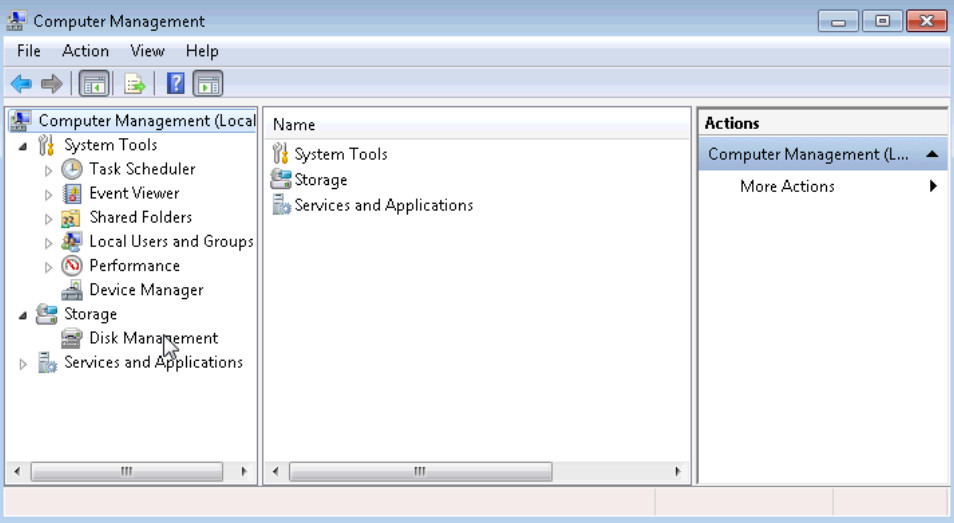
Step 2: Create a new disk volume in the free space
a. Right-click on the block of Free Space or Unallocated space, then click New Simple Volume.
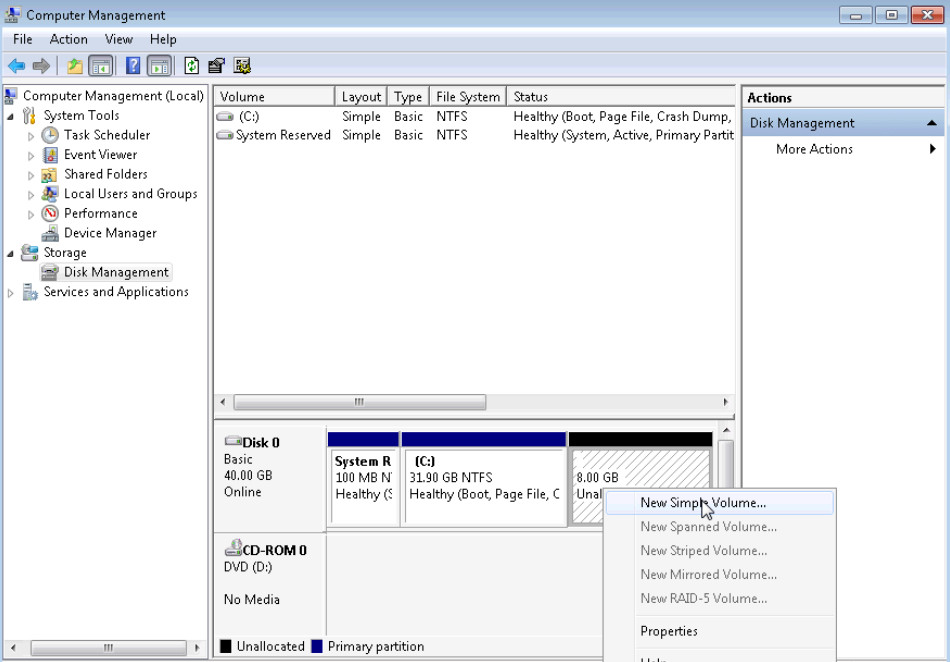
b. The New Simple Volume Wizard window opens. Click Next.
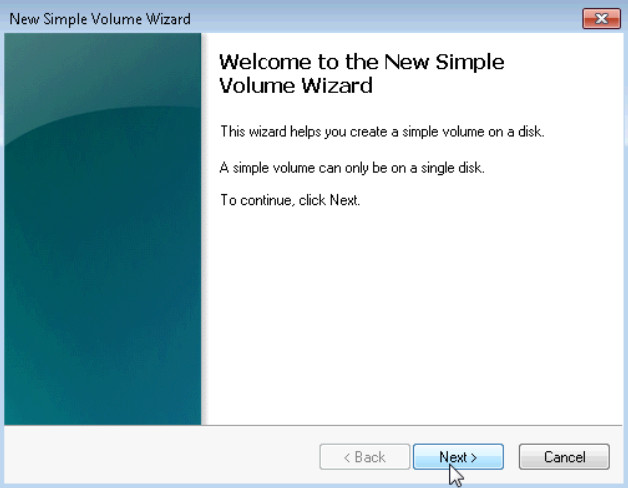
c. The Specify Volume Size window opens. Type 2000 in the Simple volume size in MB field, and then click Next.
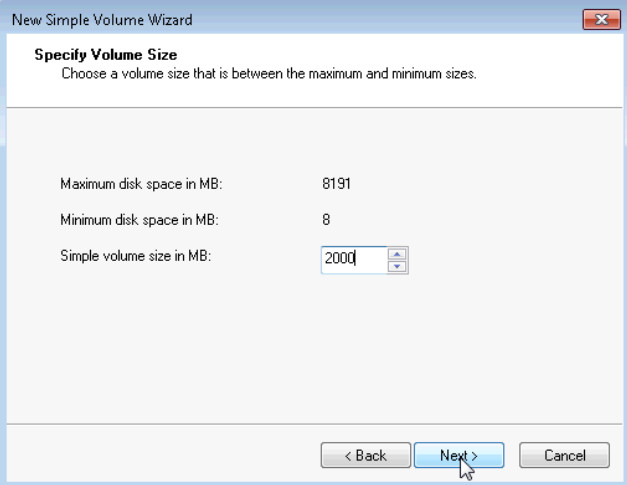
d. Click the Assign the following drive letter: radio button. Select I from the drop-down menu, and then click Next.
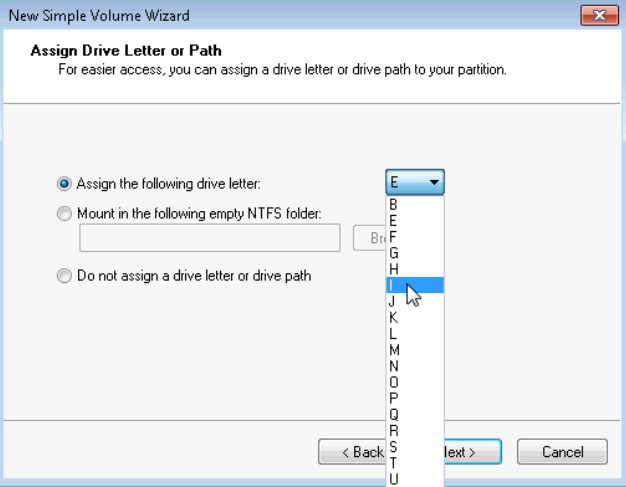
Note: You may need to substitute different drive letters for the letters shown in this lab.
e. Click the Format this volume with the following settings: radio button. Select FAT32 from the File system drop-down menu, and then click Next.

f. The Completing the New Simple Volume Wizard window opens. Click Finish.
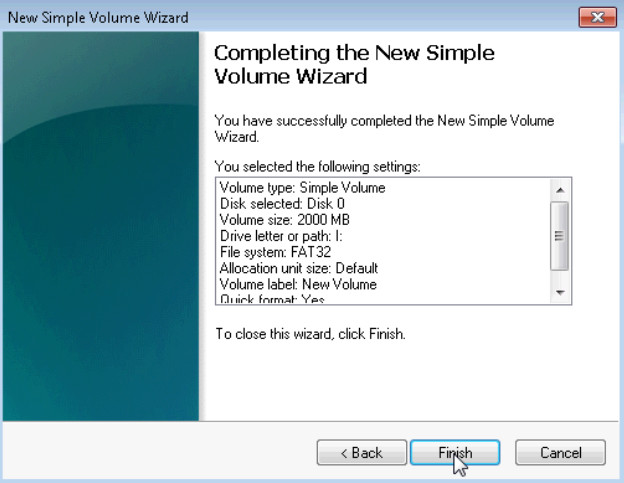
g. The Computer Management window displays the status of the NEW VOLUME. Close the Computer Management window.
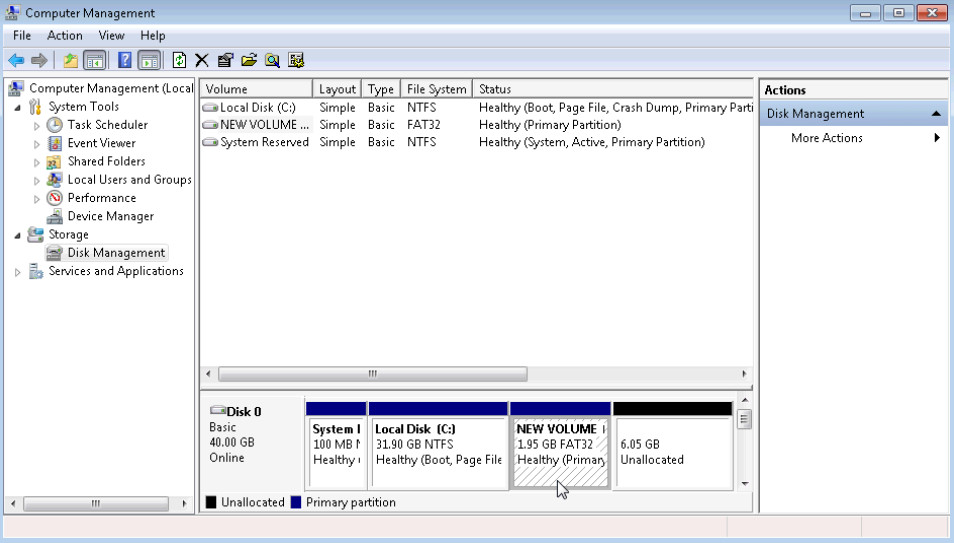
Step 3: Open the Computer window to review information about the new disk partition.
a. Click Start > Computer to open the Computer window.
b. Click to highlight the NEW VOLUME (I:) drive and basic information about the drive will appear at the bottom of the Computer window.

What type file system is used on the NEW VOLUME (I:)?
FAT32
How much Free Space is shown?
Answers may vary, but the example shows 1.94 GB.
c. Right-click the NEW VOLUME (I:) drive, then select Properties.

d. The NEW VOLUME (I:) Properties window opens.
List the tabs found in the NEW VOLUME (I:) Properties window.
General, Tools, Hardware, Sharing, ReadyBoost, Previous Versions, Customize
e. On the General Tab, rename the volume from NEW VOLUME to ITE, and then click OK.
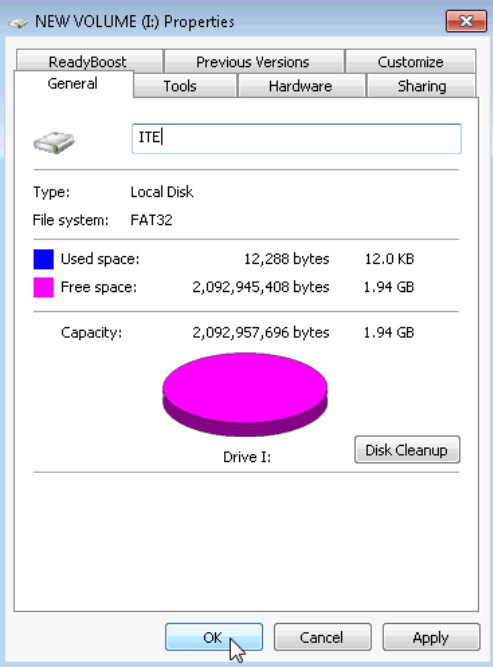
Step 4: Create a text document and save it to the ITE drive.
a. Click ITE (I:) in the left panel of the Computer window, then right-click anywhere in the white space of the right panel.
b. Click New > Text Document.
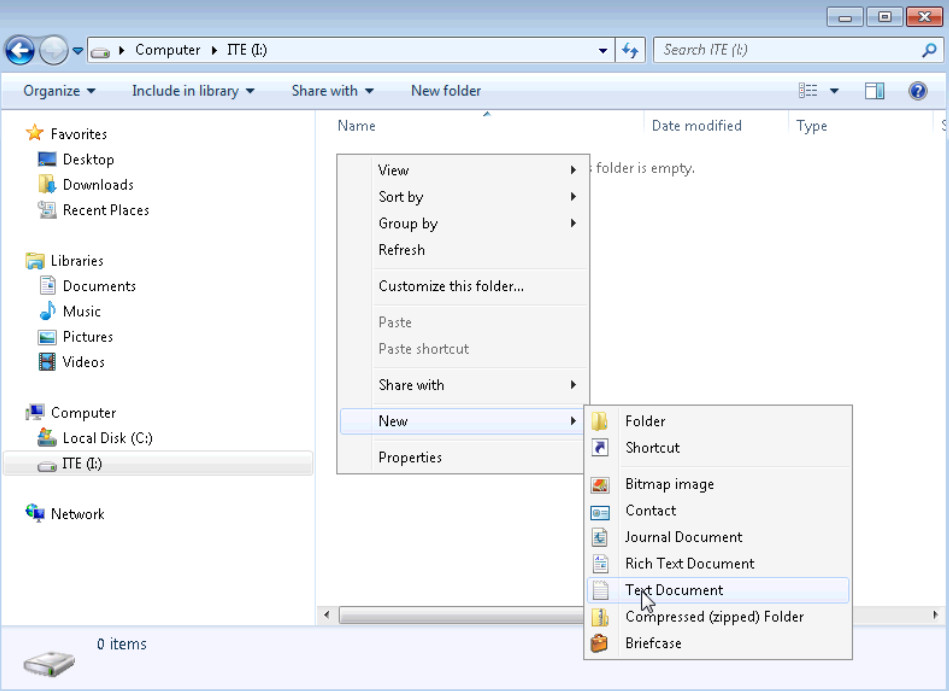
c. Rename the New Text Document to ITE Test Document and press Enter.
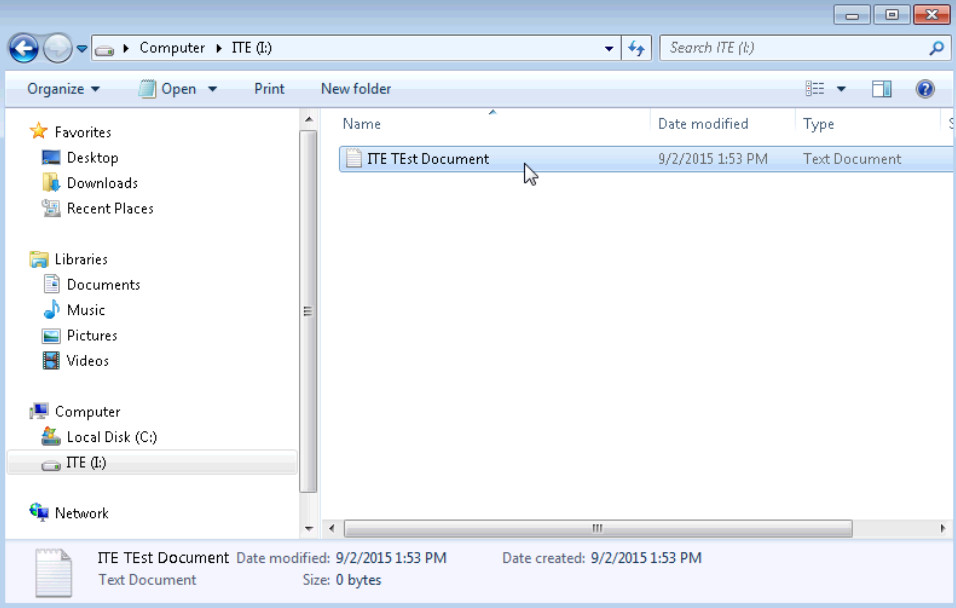
d. Right-click on the ITE Test Document and choose Properties. This opens the ITE Test Document Properties window.
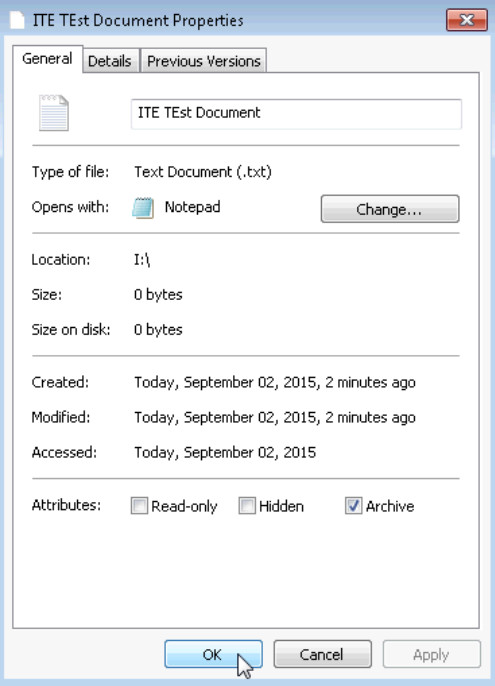
What tabs are listed in the ITE Test Document Properties window?
General, Details, Previous Versions
e. Click OK to close the ITE Test Document Properties window. Close the Computer window.
Step 5: Convert the ITE Volume from FAT32 to NTFS without losing data.
a. Click Start, then type cmd in the search field just above the start button. Right-click on the command program that appears, and click Run as administrator.
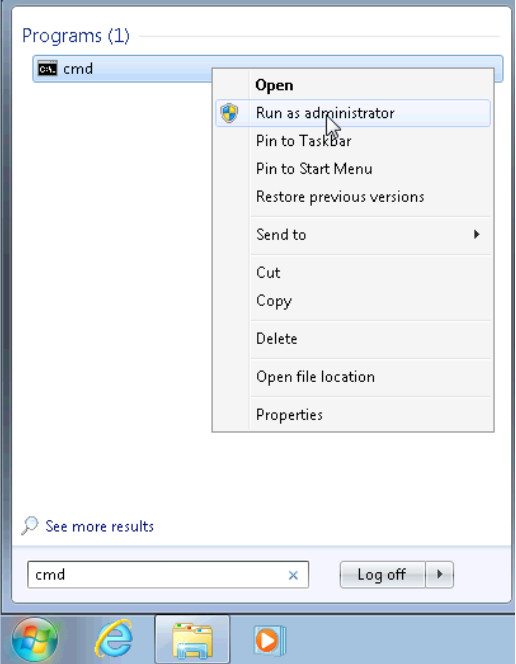
b. The Administrator: C:\Windows\System32\cmd.exe window opens. At the command prompt, type convert I: /fs:NTFS and then press Enter.
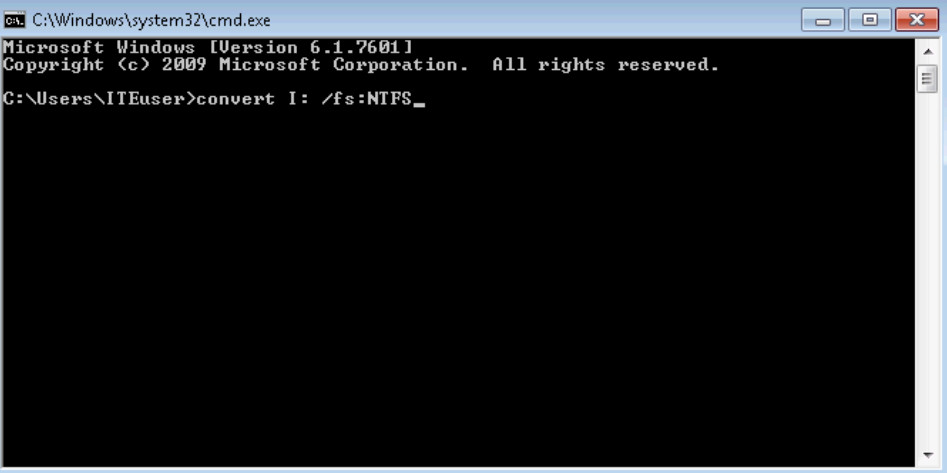
c. You will be prompted to enter the current volume label for drive I:. Type ITE and press the Enter key.
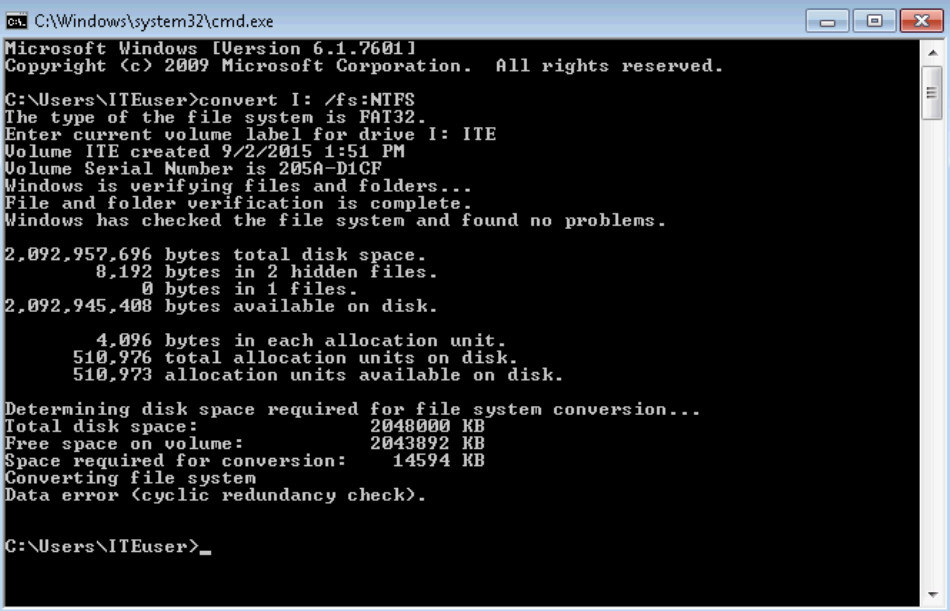
d. Review the information displayed by the convert command. To close the Administrator: C:\Windows\System32\cmd.exe window, type exit at the command prompt and then press Enter.
Step 6: Open the Computer window to work with the ITE volume.
a. Click Start > Computer to open the Computer window.
b. Right-click on the ITE (I:) volume, and select Properties from the drop down menu.
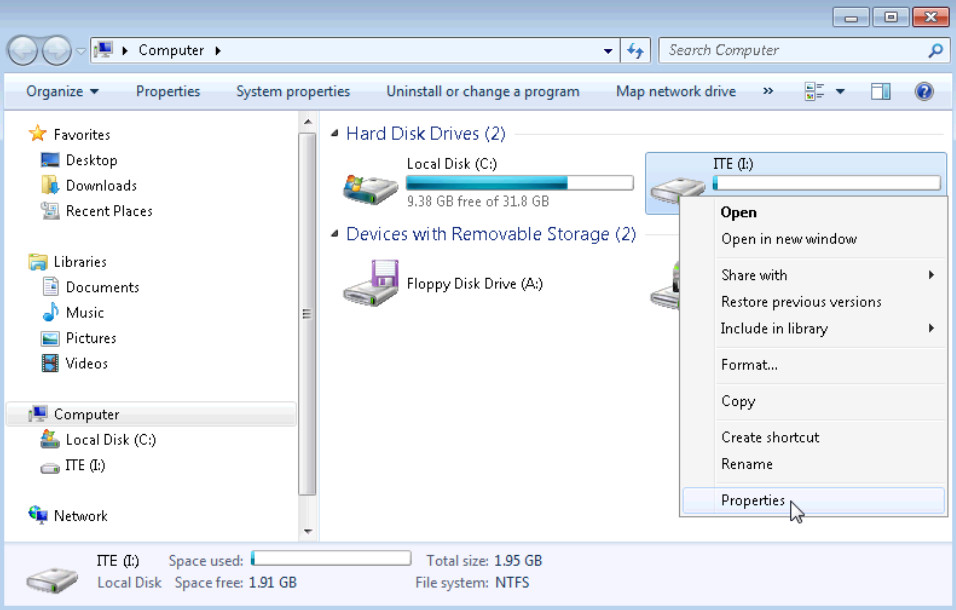
What type of File System is used for the ITE (I:) drive?
NTFS
What are the tabs in the ITE (I:) Properties window?
General, Tools, Hardware, Sharing, Security, ReadyBoost, Previous Versions, Quota, and Customize.
When the volume was FAT32, there were seven tabs. What are the names of the new tabs that were added after the volume was converted to NTFS?
Security and Quota
c. Click Cancel to close the ITE (I:) Properties window.
Step 7: Display the properties of the ITE Test Document.
a. In the left pane of the Computer window, click ITE (I:).
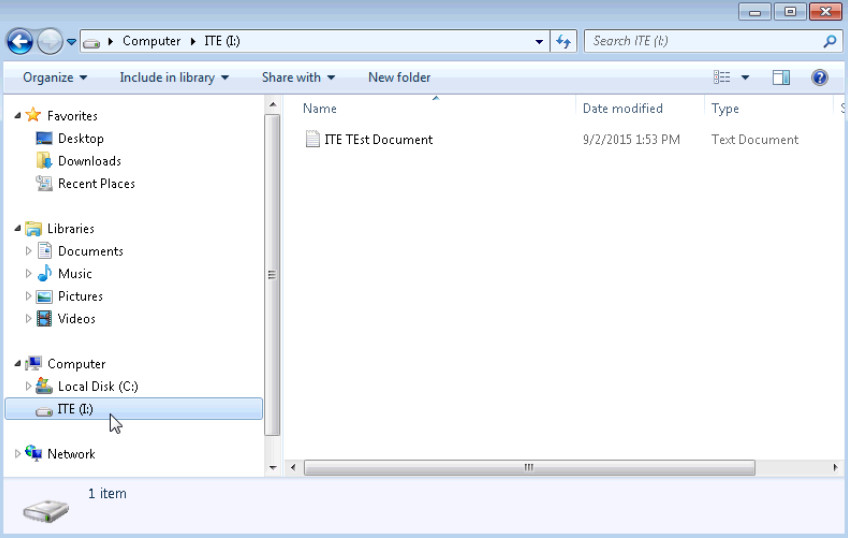
b. Right-click on the ITE Test Document, then select Properties from the drop down menu.

What are the tabs in the ITE Test Document Properties window?
General, Security, Details, Previous Versions
When the volume was FAT32, there were three tabs. What is the name of the new tab that was added after the volume was converted to NTFS?
Security
c. Close all open windows.
Reflection
Why is there an additional Security tab in the properties windows for documents stored on an NTFS volume?
Answers will vary. NTFS incorporates additional security features and extended attributes. The security tab provides a way to display and change permissions of the documents stored on its volume.
